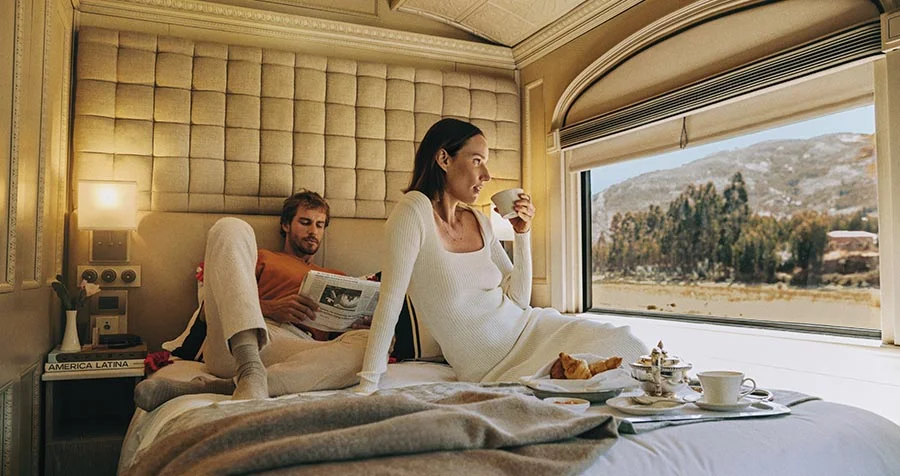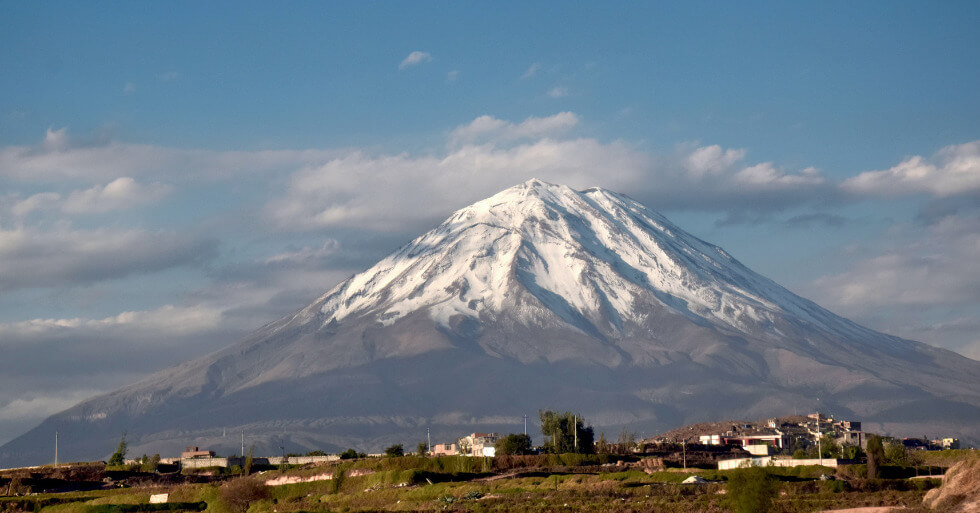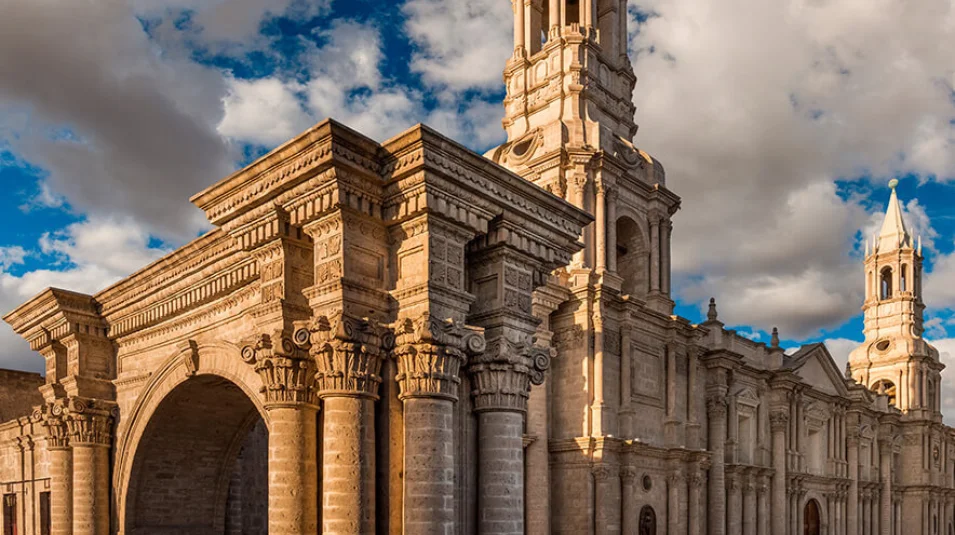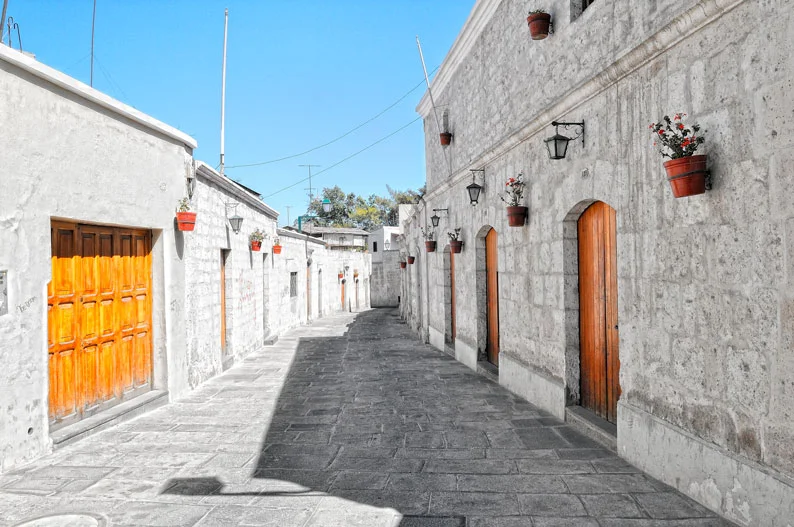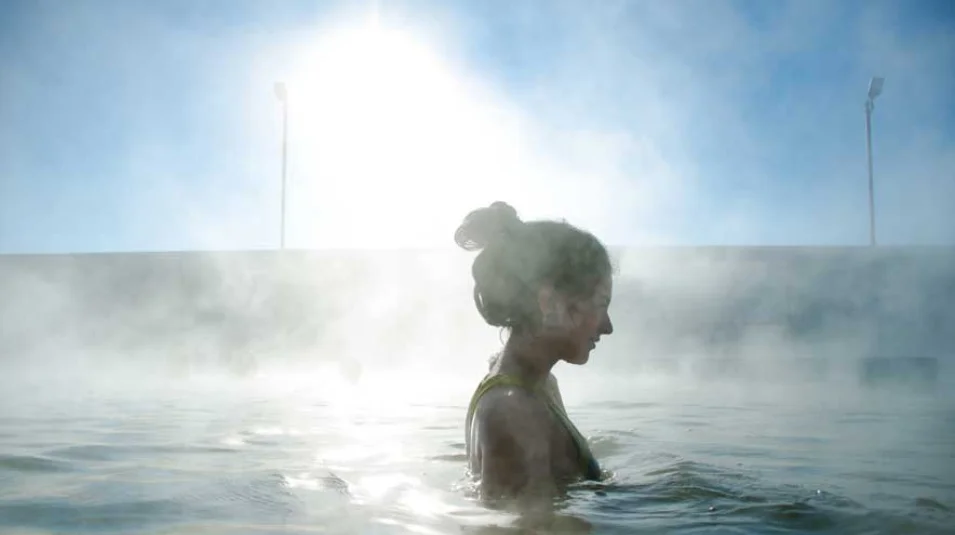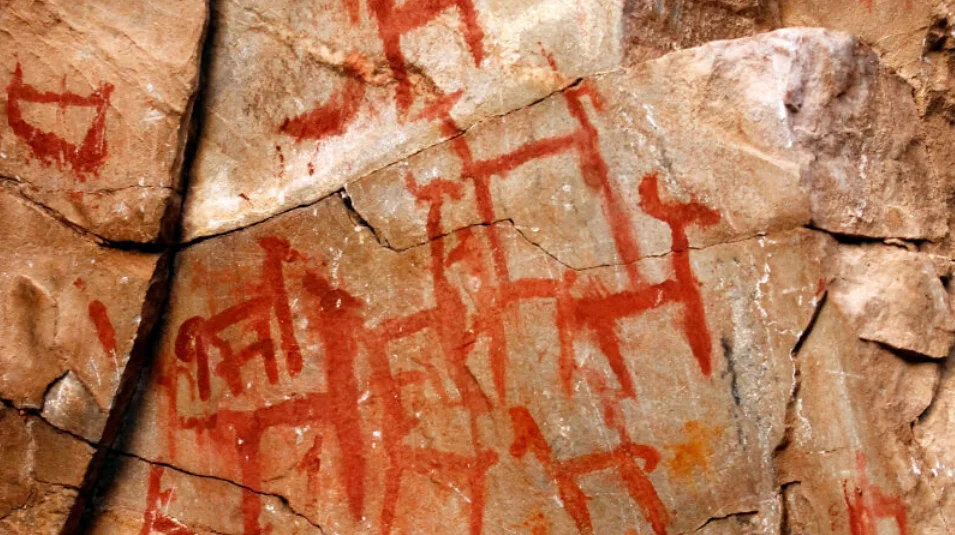AREQUIPA
The White City
Altitude
7,660 ft
Dry Season
50°F - 74°F
Rainy Season
54°F - 70°F
Arequipa is known as the White city due to its architecture built with white volcanic rock, known as Sillar. However, there are many people who would like to give it another name, because it is surrounded by four imposing volcanoes. Learn more about one of the most beautiful cities in Peru and discover how to get there.
What to do in Arequipa?
The historical center of Arequipa
Misti Volcano
Santa Catalina Monastery
Salinas and Aguada Blanca National Reserve
Yanahuara Lookout
Choqolaqa Rock Forest
Sillar Route
Colca Canyon
Imata Rock Forest and Pillones Waterfall
Rafting on the Chili River
Hot Springs at La Calera
Barrio de San Lázaro - Picanterías
Uyo Uyo Archaeological Complex
Casa Museo Mario Vargas Llosa
Archaeology Museum and Santuarios Andinos Archaeological Museum
Alpaca World (museum)
San Camilo Market
Arequipa Cathedral Museum
Bars and discos
How to get to Arequipa?
There are three ways to get to Arequipa:
- By air: Flights from Lima take approximately 1 ½ hours, and from Cusco the flight takes 30 minutes.
- By road: The633 miles land route from Lima to Arequipa takes approximately 15 ½ hours. The 388 miles route from Cusco to Arequipa takes approximately 8 ½ hours.
- By train: On board the luxurious Andean Explorer, a Belmond Train, the journey is unforgettable through Andean landscapes.
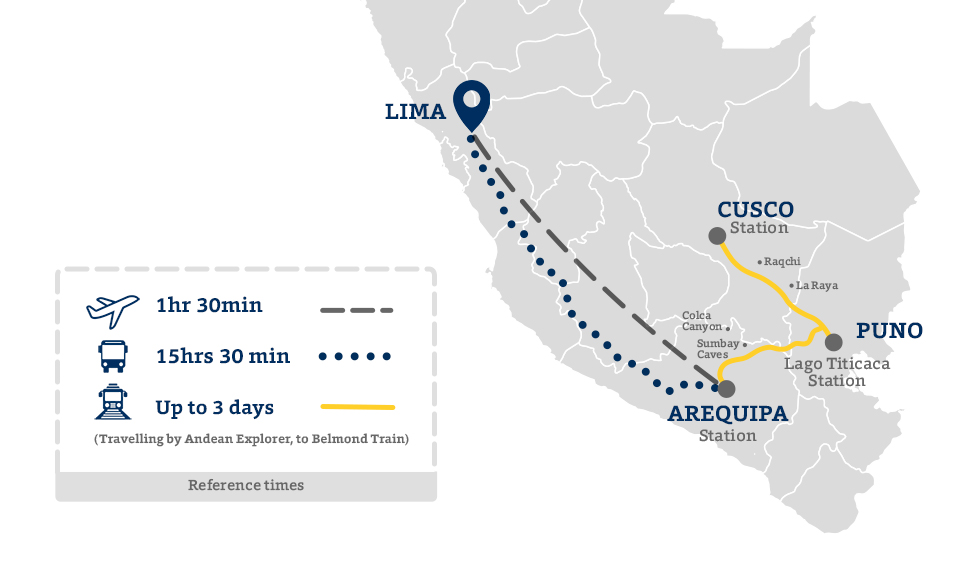
Train Service to Arequipa
Trains Station in Arequipa
- Arequipa Station
- Address: Av. Tacna y Arica 200, Arequipa, Perú.
Hotel in Arequipa
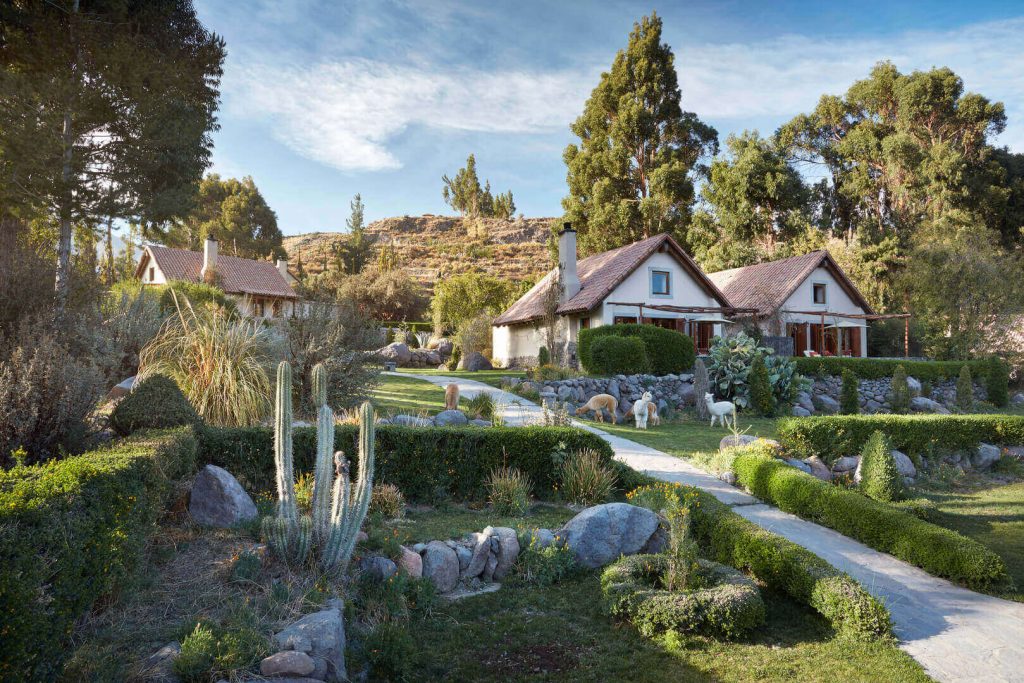
Las Casitas, A Belmond Hotel
Las Casitas, a Belmond Hotel: Escape to a world of serene pleasure, surrounded by the peace and tranquility of the wonderful Colca Valley.
History and Culture of Arequipa
FAQ
In the rainy season (January to March), temperatures vary between 54°F and 70°F. The dry season is between April and December, when temperatures vary between 50°F and 73°F. In July, temperatures drop to 48°F. However, many visitors agree that Arequipa is a great destination at any time of the year.
The altitude will probably affect you but in Arequipa you can offset this by taking things slowly and gradually when you first arrive. We suggest you take a city tour or simply walk around the nearby areas on your first day, to acclimatize.
Voltage in Peru is 220v. You will need an adaptor if the voltage in your country is 110v. The most common outlets are Type A, Type B and Type C.
For meals and shopping, it will depend on the establishment you visit. The smallest local and family shops tend to only accept cash. However, you can buy your train ticket using all the payment methods, including credit cards, debit cards, cash, and bank transfers.
Arequipa is home to some of the most iconic dishes in the country: chupe de camarones, rocoto relleno, solterito, adobo arequipeño and ocopa.
The temperatures in Arequipa do not tend to vary greatly, there are no sharp cold levels. Wear clothes that are comfortable and some outer wear.
